 Last additions - Kin 金武町 Last additions - Kin 金武町 |
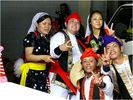
For their parting shot, these Eisa dancers couldn’t resist flashing the Peace sign along with their smiles for the camera. Photo copyright 2009 Michael Lynch.Jun 15, 2009
|
|
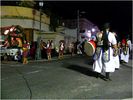
Different color yukata and uniforms of the dancers are worn, depending on which district or village they represent.Photo copyright 2009 Michael Lynch.Jun 15, 2009
|
|
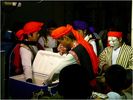
Here a group of men reach into a cooler for some refreshments while on a quick break from dancing. They will pile on trucks and move to the next location, performing Eisa dances well past midnight at every street, in every village for miles around.Photo copyright 2009 Michael Lynch.Jun 15, 2009
|
|

The large banner or flag carried on a bamboo pole is known as Hatagashisa and also represents a village or district. Each has their own unique design and the team takes pride in displaying it as a symbol of strength and prosperity for their hometown.Photo copyright 2009 Michael Lynch.Jun 15, 2009
|
|
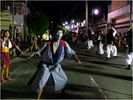
Here the Buffoon (called Gajangani) can be seen going in the opposite direction of all the other male dancers and waving a banana leaf. Some clowns carry bottles of sake and try to get bystanders to drink with them.Photo copyright 2009 Michael Lynch.Jun 15, 2009
|
|
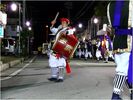
The large drum used for marching is slightly smaller than a Taiko and is called an Odaiko drum. The drummer in this photo is the only female player of this team to play such a large drum and she smiles and beats it enthusiastically.Photo copyright 2009 Michael Lynch.Jun 15, 2009
|
|
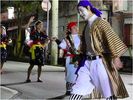
The brown and beige garment worn by this Buffoon is hand woven clothing called Bashofu. It is made from the fiber of banana plants. There may be two or three of these characters with each Eisa group skipping and weaving through the dancers as if they...The brown and beige garment worn by this Buffoon is hand woven clothing called Bashofu. It is made from the fiber of banana plants. There may be two or three of these characters with each Eisa group skipping and weaving through the dancers as if they weren’t there. Photo copyright 2009 Michael Lynch.Jun 15, 2009
|
|
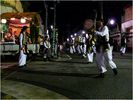
Each team of Eisa dancers has its own band riding in the back of a straw roof-covered truck. Sanshin (3 stringed instrument) players sing and play Okinawan folk music accompanied by CD’s blasted over a loudspeaker system. Photo copyright 2009 Michael Lynch.Jun 15, 2009
|
|
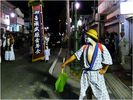
The Buffoon, Clown, or Town Drunk is a man who zig-zags through the line of dancers to the beat of his own drum, entertaining everyone and chasing evil spirits away.Photo copyright 2009 Michael Lynch.Jun 15, 2009
|
|
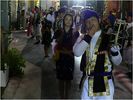
During each brief pause in the Eisa music, the men make a loud whistling noise that is distinctly Okinawan. All photos copyright 2009 Michael Lynch.Photo copyright 2009 Michael Lynch.Jun 15, 2009
|
|
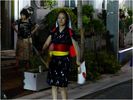
Eisa dancing is performed on the streets at night in every village on Okinawa during the three days of Obon, late in August. Here a young lady dressed in traditional Okinawan yukata (an informal kimono) marches while waving Rising Sun paper fans.Photo copyright 2009 Michael Lynch.Jun 15, 2009
|
|
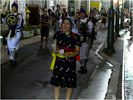
The Eisa dancers are all unmarried men and women between 20 and 30 years of age. The small handheld drums, known as Panraku, have the traditional symbol of Okinawa painted in gold on them.Photo copyright 2009 Michael Lynch.Jun 15, 2009
|
|
|
|